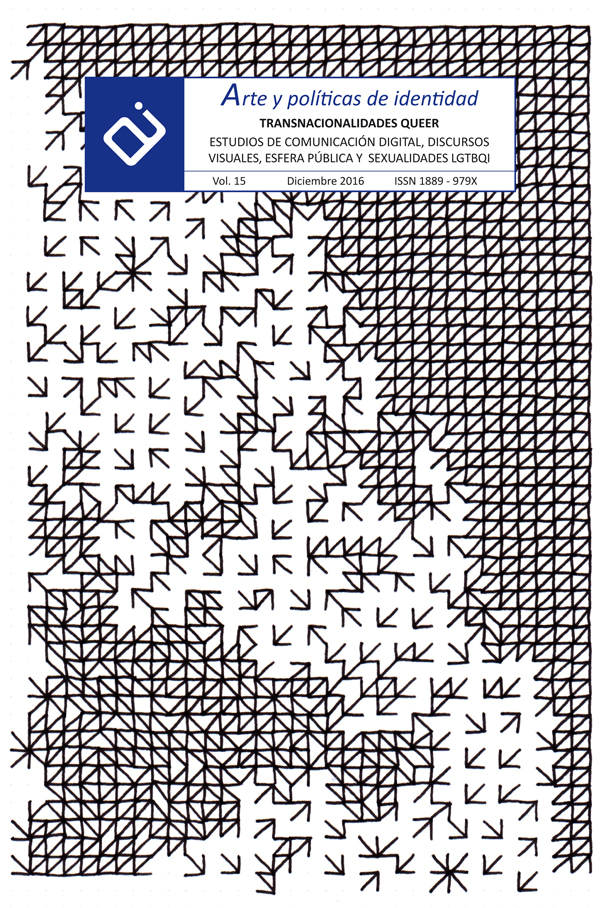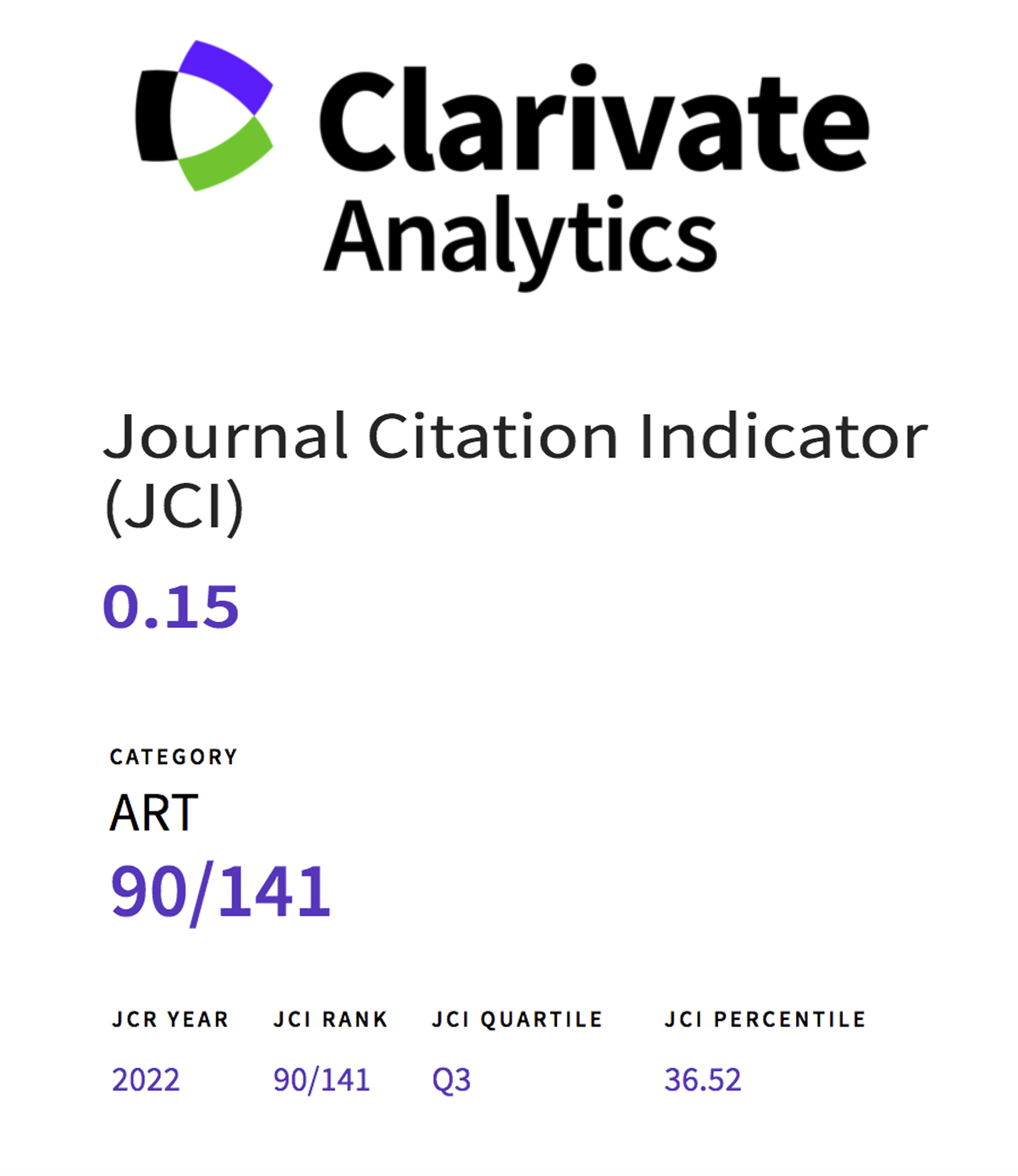La persistencia del deseo
Los hombres gays online y la visibilidad Queer
Abstract
Las formas de sociabilización queer en línea, se han establecido como un campo de investigación para muchas investigaciones sociales. Estas han contribuido a nuestra comprensión contemporánea de las nuevas geografías de la sexualidad. Esta tarea ha requerido una cautelosa revisión de las metodologías existentes y de las herramientas conceptuales, sobre todo, cuando la sexualidad surgió como un eje de investigación. En este artículo, exploro la persistencia de la categoría “deseo” para el estudio de las sexualidades disidentes en línea. Aunque una aproximación crítica del deseo está presente en los estudios queer, mi argumento se basa en la implementación de formulaciones teóricas queer e/o feministas sobre el deseo, ya que ha sido una problemática común el combinar teorías sobre el deseo queer sin reflexionar acerca del campo sobre el cual se puede aplicar esta teoría. El deseo, como una categoría, también tiene que ver con el desmantelamiento de las geografías del cruising y con el aspecto errante inherente a esta práctica. Este artículo, al discutir teóricamente la relación entre “deseo”, “visualización” y cultura “digital”, señala el aspecto perturbador del deseo en relación con las formas de ver en línea y la performatividad.
Downloads
References
Barad, K. (2003). Posthumanist Performativity: toward an understanding of how matter comes to matter. Signs Journal of Women in Culture and Society (28)3: 801-831.
Berger, J. (1972). Ways of Seeing. New York: Penguin Books.
Berlant, L. (2012). Desire/Love. New York: Babel Working Group.
Binnie, J. (2004). The globalization of Sexuality. London: Sage.
Braidotti, R. (2011). Nomadic subjects: embodiment and sexual difference in contemporary feminist theory. New York: Columbia University Press.
Brickell, C. (2012). Sexuality, Power and the Sociology of the Internet. Current Sociology (60) 1, 28-64.
Brown, G. (2008). Ceramic, clothing and other bodies: affective geographies of homoerotic cruising encounters. Social & Cultural Geography (9)8, 915-932.
Browne, K., & Catherine J. N., eds. (2010). Queer Methods and Methodologies: Intersecting Queer Theories and Social Science Research. Burlington: Ashgate.
Butler, J. (1990). Gender Trouble. New York: Routledge. Butler, J. (1993). Bodies That Matter: On the Discursive Limits of Sex. New York: Routledge.
Campbell, J. E. (2004). Getting It on Online: Cyberspace, Gay Male Sexuality and Embodied Identity. New York: Harrington Park Press.
Chauncey, G. (1994). Gay New York: Gender, Urban Culture, and the Making of Gay Male World 1890-1940. New York: Basic Books.
Deleuze, G. (1988). Foucault. Minneapolis: University of Minnesota Press.Deleuze, G. (1992a). Postscript on the Societies of Control. October 59, 3-7.
Deleuze, G. (1992b). What Is a Dispositif? In: Michel Foucault Philosopher. New York: Routledge.
Foucault, M. (1990). The History of Sexuality Volume 1: An Introduction. New York: Vintage Books.
Foucault, M. (1995). Discipline and Punish. The Birth of the Prison.New York: Vintage Books.
Fuss, D. (1990). Essentialy Speaking. Feminism, Nature & Difference. New York: Routledge.
Gorman-Murray, A., Nash, C. J. (2016). Digital Sexualities: Section Introduction. In: Brown, G.; Browne, K. (Ed.) The Routledge Companion to Geographies of Sex and Sexuality. New York: Routledge.
Grosz, E. (1991). Jacques Lacan. A Feminist Introduction. New York: Routledge.
Grosz, E. (2001). Architecture from the Outside: Essays on Virtual and Real Space. Massachusetts: MIT.
Haraway, D. (1991). Simians, Cyborgs and Women: The Reinvention of Nature.New York: Routledge.
Jaspal, R. (2016). Gay Men’s Construction and Management of Identity on Grindr. Sexuality and Culture, doi: 10.1007/s12119-016-9389-3
Lacan, J. (1998). The Four Fundamental Concepts of Psychoanalysis. New York: W. W. Norton & Company.
Lacan, J. (2002). Écrits. New York: W. W. Norton & Company, Inc.Löw, M. (2001) Raumsoziologie. Frankfurt: Suhrkamp.
McGlotten, S. (2013). Virtual Intimacies: Media, Affect and Queer Sociality. New York: SUNY Press.
McLelland, M. J. (2002). Virtual Ethnography: using the Internet to study gay culture in Japan. Sexualities vol. 5(4): 387-406.
Miller, B. (2015). Dude, Where’s Your Face? Self-Presentation, Self-Description, and Partner Preferences on a Social Networking Application for Men Who Have Sex With Men: A Content Analysis. Sexuality and Culture 19, 637-658.
Mooshamer, H. (2005). Cruising: Architektur, Psychoanalyse und Queer Cultures. Vienna: Böhlau.
Mowlabocus, S. (2010). Gaydar Culture: Gay Men, Technology and Embodiment in the Digital Age. Burlington: Ashgate.
Muñoz, J. E. (1999). Disidentifications: Queers of Color and the Performance of Politics. Minneapolis: Minnesota University Press. O’Riordan, K. & J. Phillips, D. eds. (2007) Queer online: media technology and sexuality. New York: Peter Lang.
Oswin, N. (2008). Critical geographies and the uses of sexuality: deconstructing queer space. Progress in Human Geography32(1): 89-103.
Sedgwick, E. K. (1990). Epistemology of the Closet. Berkeley: University of California Press.
Sundén, J. (2003). Material Virtualities: Approaching Online Textual Embodiment.New York: Peter Lang.
Wakeford, N. (2000). Cyberqueer. In David Bell, Barbara M. Kennedy (Ed.), The Cybercultures Reader (pp. 403-415). New York: Routledge.
Works published in this journal are subject to the following terms:
- The Service of Publications from the University of Murcia (publishing house) keeps the published works’ copyrights, and favors and allows the reuse of these works under the license indicated in point 2.
- Works are published in the journal’s online edition under the license Creative Commons Reconocimiento-NoComercial-SinObraDerivada 3.0 España(texto legal). They can be copied, used, disseminated, transmitted and publicly exhibited, as long as: i) the author and original source of publication are cited (journal, publishing house and work’s URL); ii) they are not used for commercial purposes; iii) the existence and specifications of this license are mentioned.
3. Conditions for auto-file. It is allowed and encouraged that authors share electronically their pre-print version (the pre-reviewed version) and /or post-print version (the reviewed and accepted version) of their Works before the publication, since it promotes its circulation and dissemination. RoMEO color: green.









